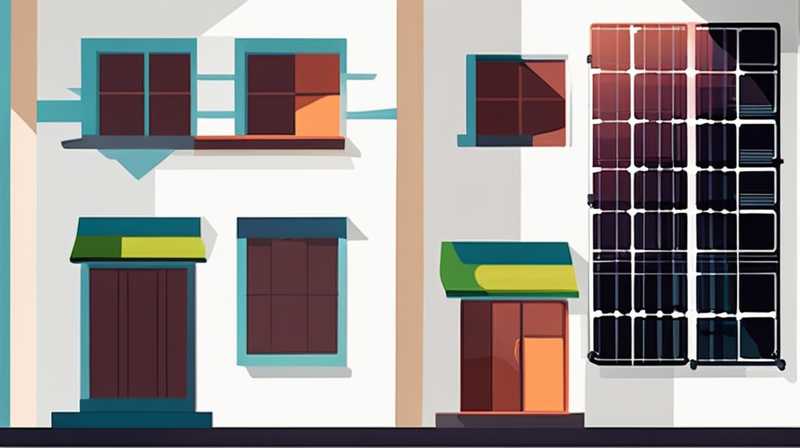
1. A solar light for a home yard generally ranges from $15 to $500, depending on factors such as quality, size, brand, and features. Most affordable options, typically costing $15 to $40, are suitable for basic illumination and are powered by small solar panels. On the higher end, solar lights may integrate advanced features like motion sensors or smart technology that allows for app connectivity. Installation costs can also factor into the total expenditure for more complex systems.
1. UNDERSTANDING SOLAR LIGHTS
Solar lights convert sunlight into energy and then use that energy to illuminate spaces at night. The technology behind solar lighting has grown significantly over the past few years. Most models are equipped with solar panels, batteries, and light-emitting diodes (LEDs). Solar panels gather sunlight during the day, storing energy in batteries for nighttime use. This eco-friendly technology not only reduces electricity bills but also contributes to sustainability.
Quality and performance vary among products, leading to a wide price range. Consumers should consider both their lighting needs and environment when selecting solar lights, as these variables influence cost and effectiveness. Essential factors such as lumens, battery capacity, and the type of solar panel can have a significant impact on efficiency and longevity, guiding choices based on specific requirements.
2. FACTORS INFLUENCING COST
When evaluating the price range of solar lights, it is vital to consider several influencing elements. Brand reputation can dictate higher pricing, as established companies often offer superior warranties and customer support. Conversely, lesser-known brands might provide more affordable products but may lack in durability or performance.
Design and features also significantly impact costs. More elaborate designs or aesthetic elements could elevate the price. Additionally, features such as motion sensors, adjustable brightness, and remote control capabilities often contribute to higher costs. Understanding these factors enables consumers to make informed purchasing choices according to their specific needs and budget constraints.
3. TYPES OF SOLAR LIGHTS
There exists a diverse array of solar lights tailored to meet various requirements. Pathway lights are popular for illuminating walkways and gardens. Generally low to mid-priced, they provide basic lighting and usually have straightforward features. Several models come with sensors, allowing them to activate automatically at dusk.
Another common type is floodlights, which are designed to provide extensive illumination for larger outdoor spaces. These tend to be pricier due to their higher output capacity and sometimes additional features. Some designs include the ability to focus light on specific areas, making them suitable for security purposes. Understanding the type of illumination needed can guide consumers in evaluating specific models and costs.
4. INSTALLATION CONSIDERATIONS
The installation process for solar lights can be straightforward or complex, depending on the model. For most basic solar lights, installation requires no more than placing the light in an appropriate location where it can receive direct sunlight. This ease of setup is appealing for homeowners looking to enhance outdoor lighting without extensive electrical work.
However, more sophisticated systems may involve tougher installation requirements, such as secure mounting or intricate wiring for additional features. These installations often necessitate professional assistance, thus increasing overall costs. Evaluating the scope of installation details assists homeowners in anticipating future expenses or deciding on DIY projects.
5. MAINTENANCE AND LONGEVITY
The maintenance required for solar lights can vary significantly among different models. Generally, basic maintenance involves ensuring the solar panels are kept clean, as dirt and debris can impede their ability to absorb sunlight. Regularly checking and replacing batteries, if necessary, is also advisable for optimal performance.
On the other hand, higher-end models may possess advanced features but can come with more daunting maintenance expectations. Problems with wiring, software updates, or integrated smart systems can arise and may require professional consultation. Longevity can also be impacted by environmental factors such as extreme weather, emphasizing the importance of choosing a model that can withstand local conditions.
FAQs
HOW LONG DO SOLAR LIGHTS LAST?
The lifespan of solar lights varies significantly with quality and usage. On average, typical solar lights may last between 2 to 5 years, but high-end models can endure upwards of a decade. Factors like material durability and battery type play critical roles in determining longevity. Solar panels generally have long lifespans and can continue functioning well even when other components fail. To maximize durability, opting for products with good warranties is advisable.
ARE SOLAR LIGHTS WORTH THE INVESTMENT?
Investing in solar lights can be worthwhile due to their energy efficiency and minimal operational costs. Unlike traditional lighting solutions, solar lights draw energy from the sun, resulting in no electricity bills. Moreover, with decreasing prices for solar technology and a variety of options available, these systems are becoming increasingly accessible. The long-term sustainability potential, coupled with reduced environmental impact, further establishes solar lights as attractive investments for homeowners.
CAN I USE SOLAR LIGHTS IN WINTER?
Solar lights can indeed be used during winter; however, efficacy may be affected due to shorter daylight hours and inclement weather. Heavy snow or ice can obstruct solar panels, minimizing energy absorption. To maximize performance, regular maintenance such as clearing debris and positioning lights to receive maximum sunlight exposure is recommended. Additionally, using lights with higher lumen outputs can compensate for reduced energy conditions.
In summary, the actual cost for solar lights in a home yard varies significantly, influenced by several factors including quality, design, brand, and installation needs. While entry-level products can start at just $15, more advanced options can reach upwards of $500. Proper understanding of these elements, both for selection and purchase, ensures optimal value for your investment. It’s crucial to assess individual lighting requirements and the environmental context prior to making any solar light decisions. This thoughtful approach enables homeowners to enjoy both functional outdoor lighting and the benefits associated with renewable energy sources.
Original article by NenPower, If reposted, please credit the source: https://nenpower.com/blog/how-much-does-a-solar-light-cost-in-a-home-yard/


